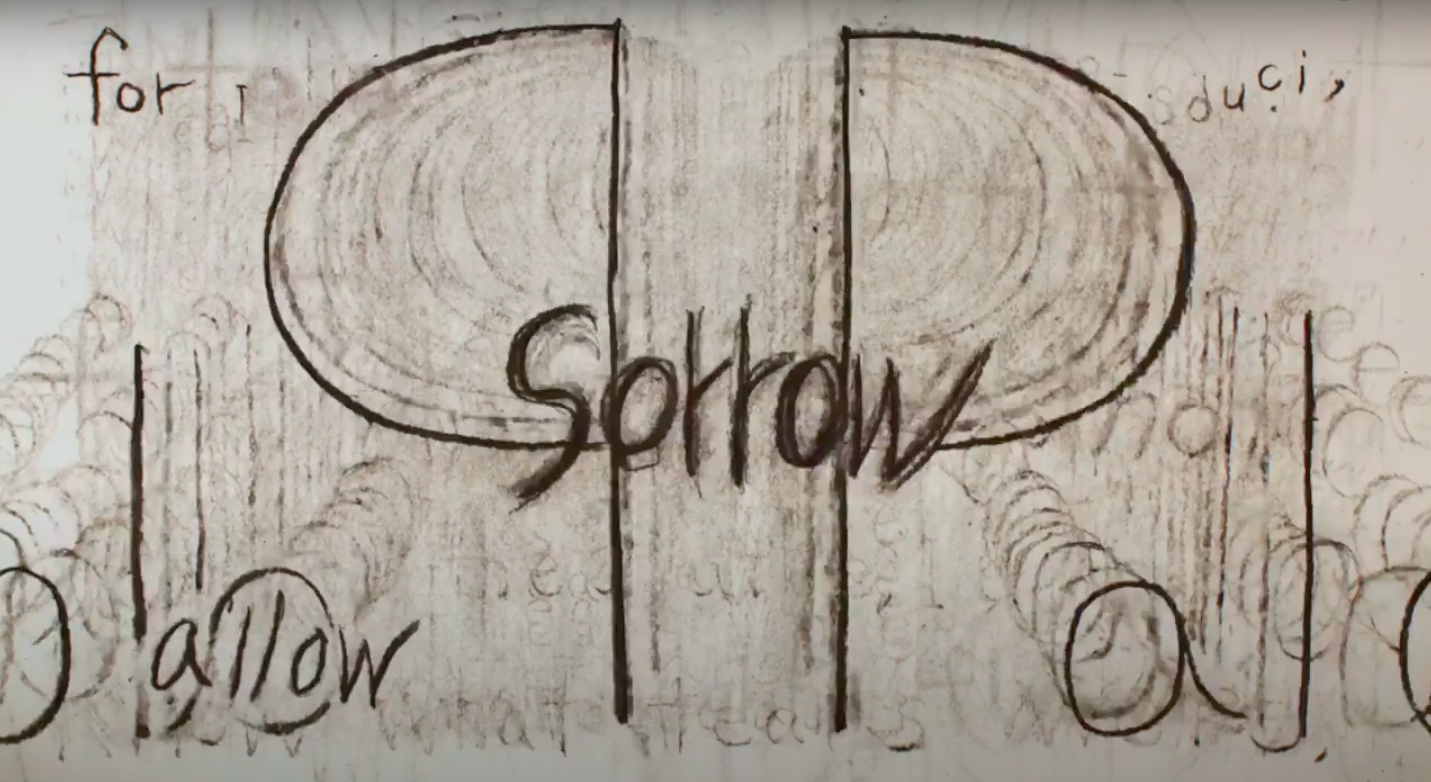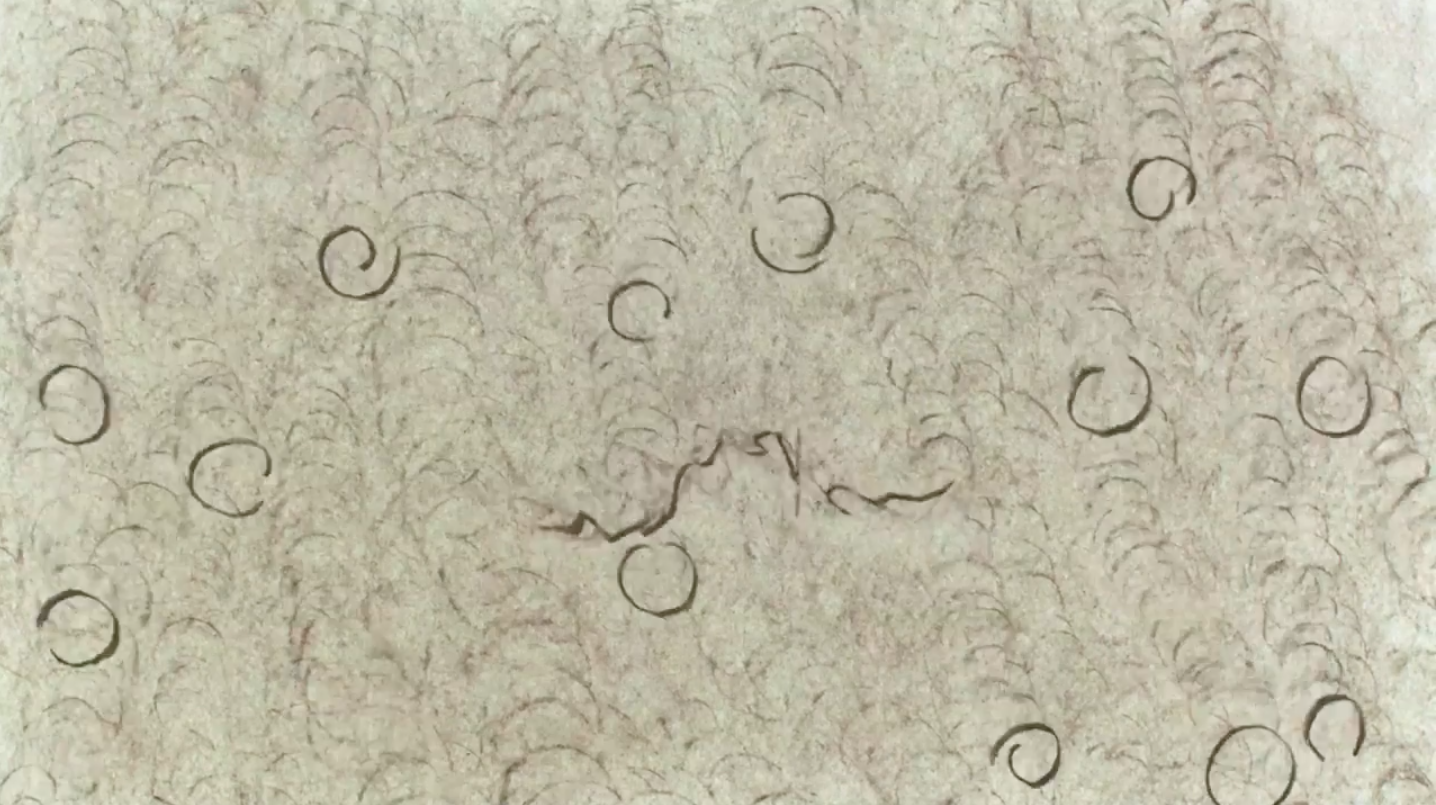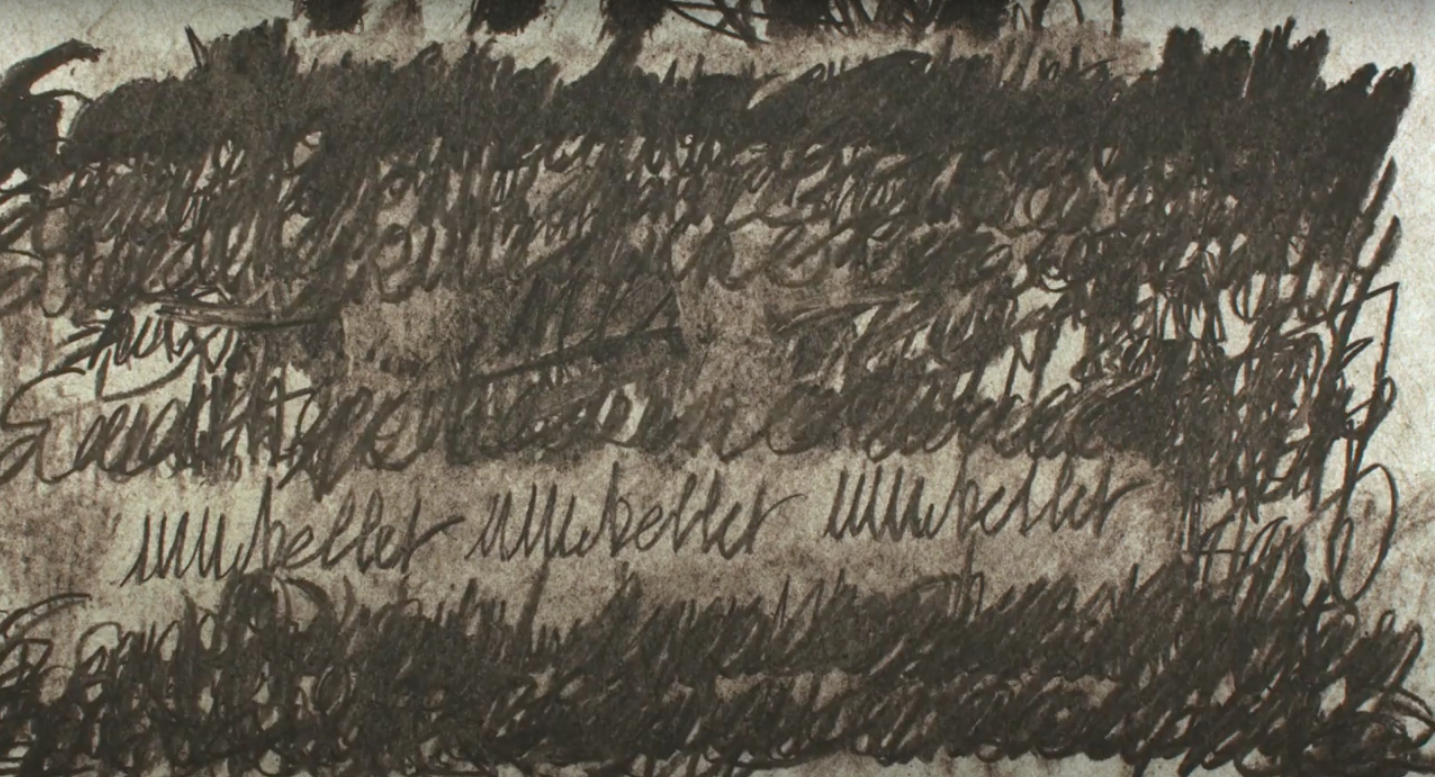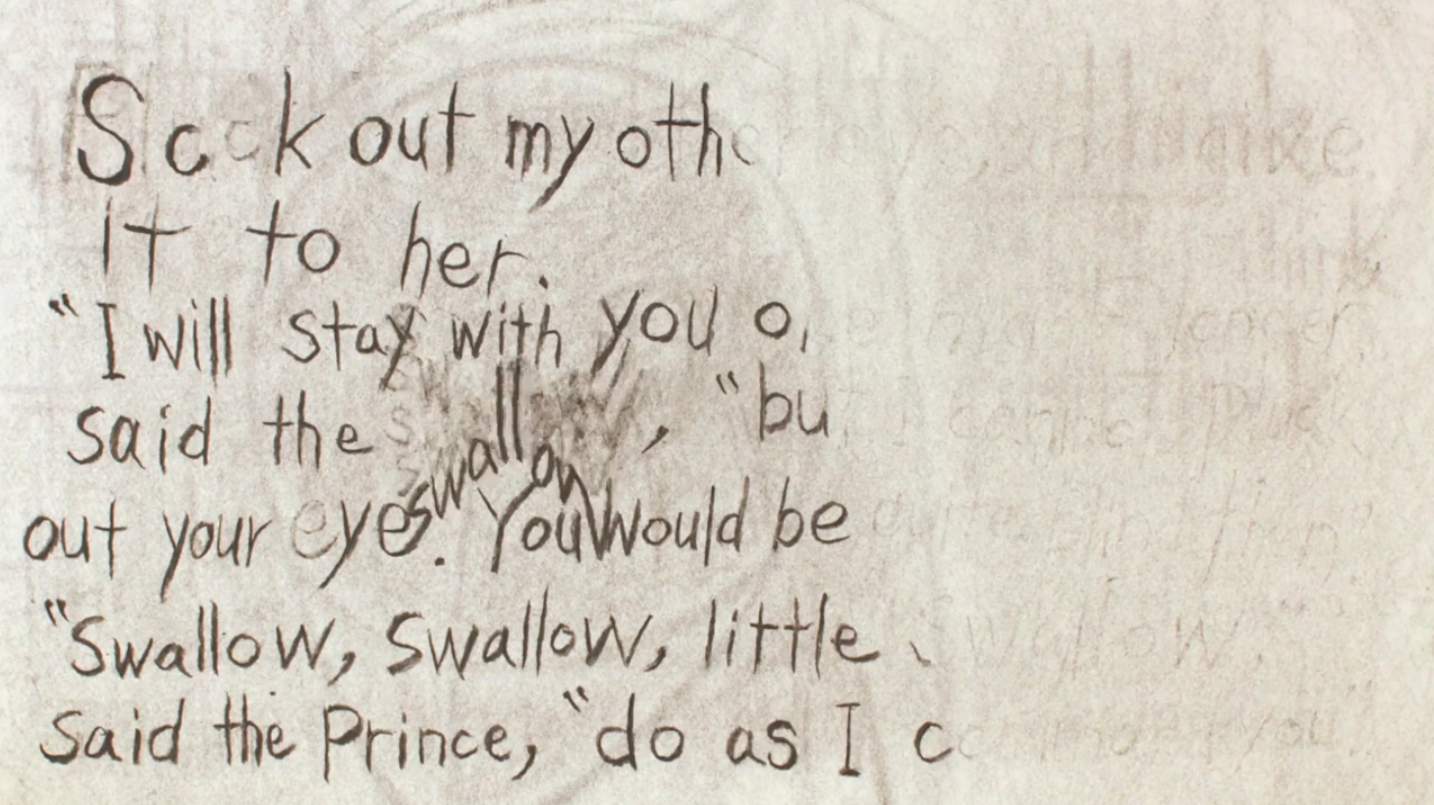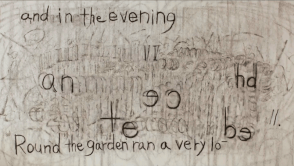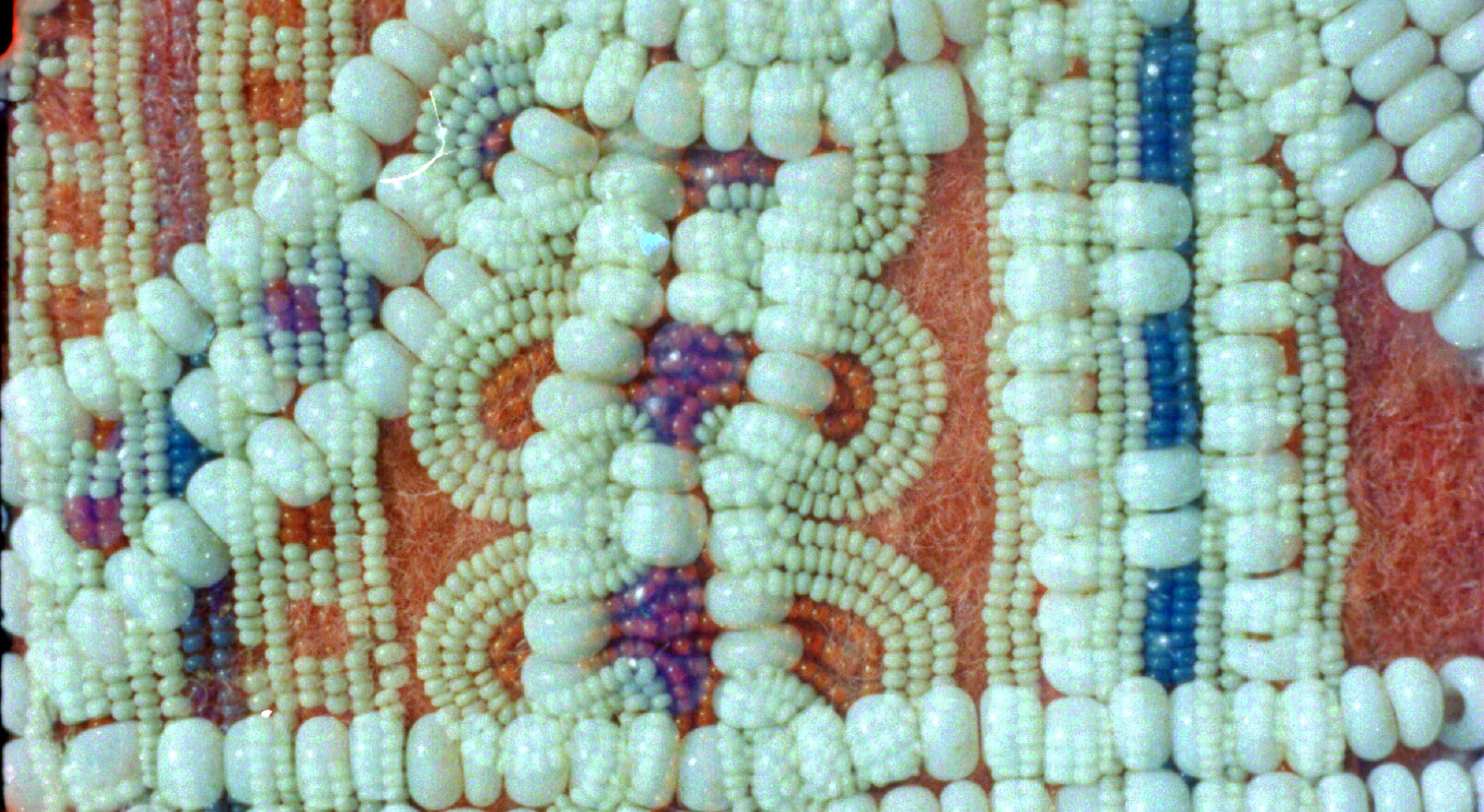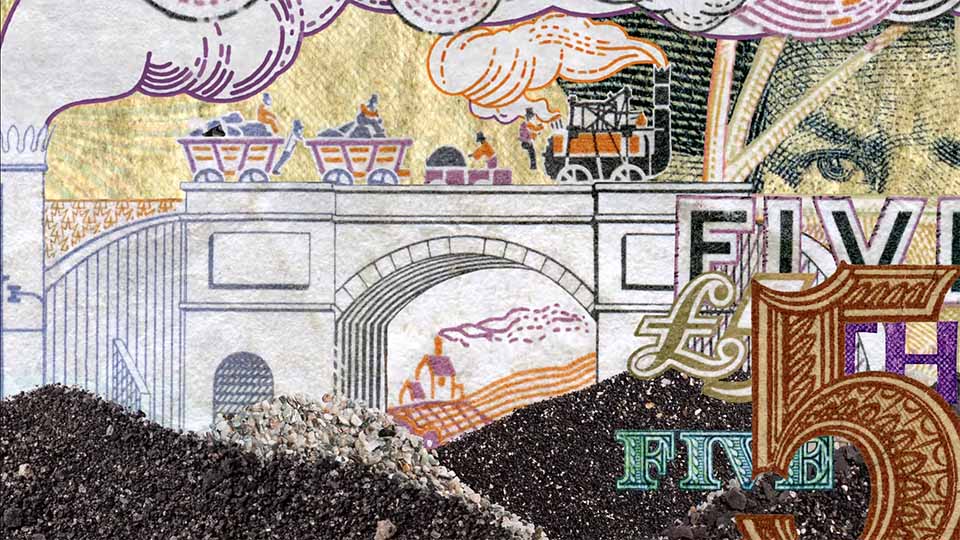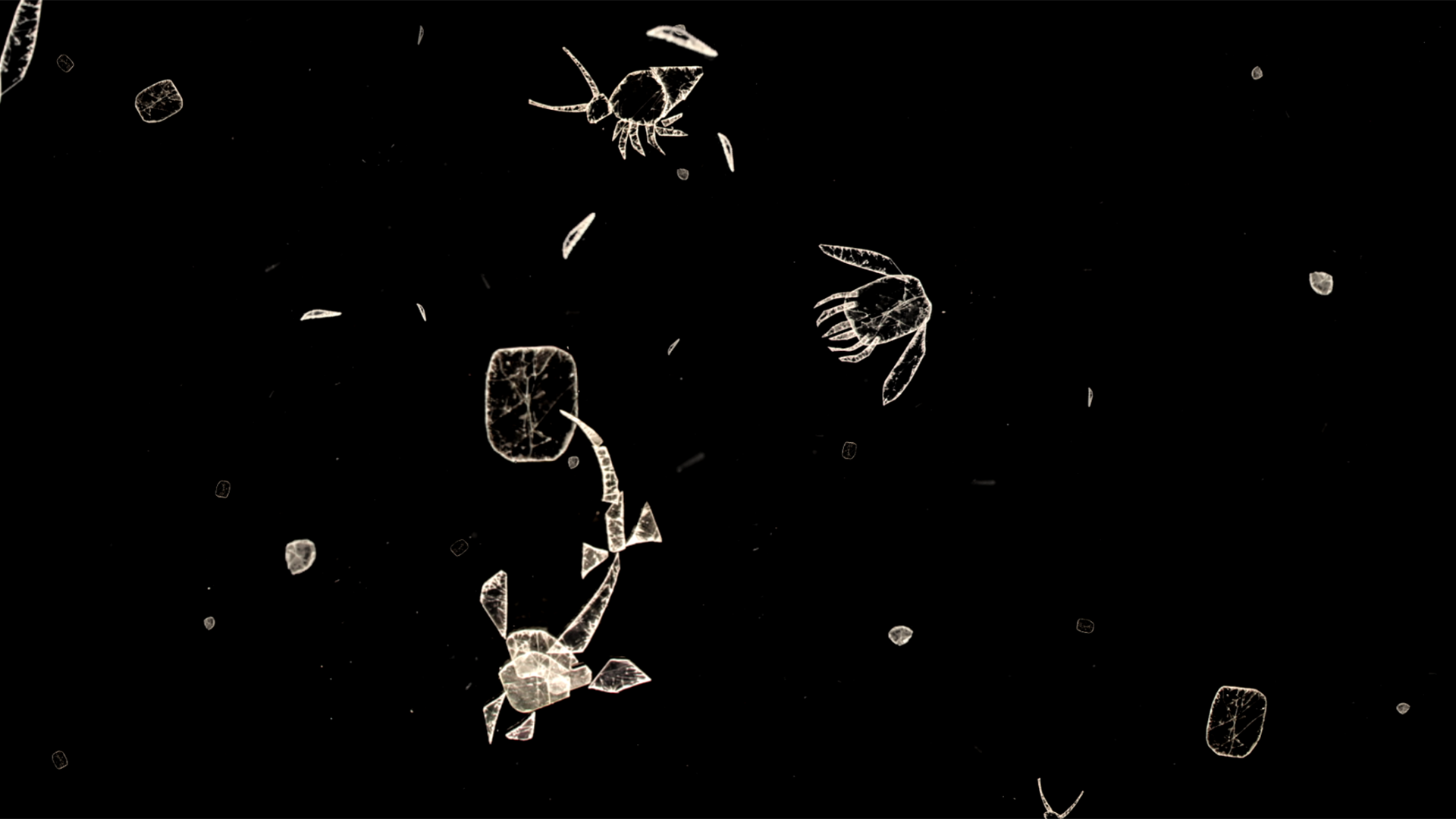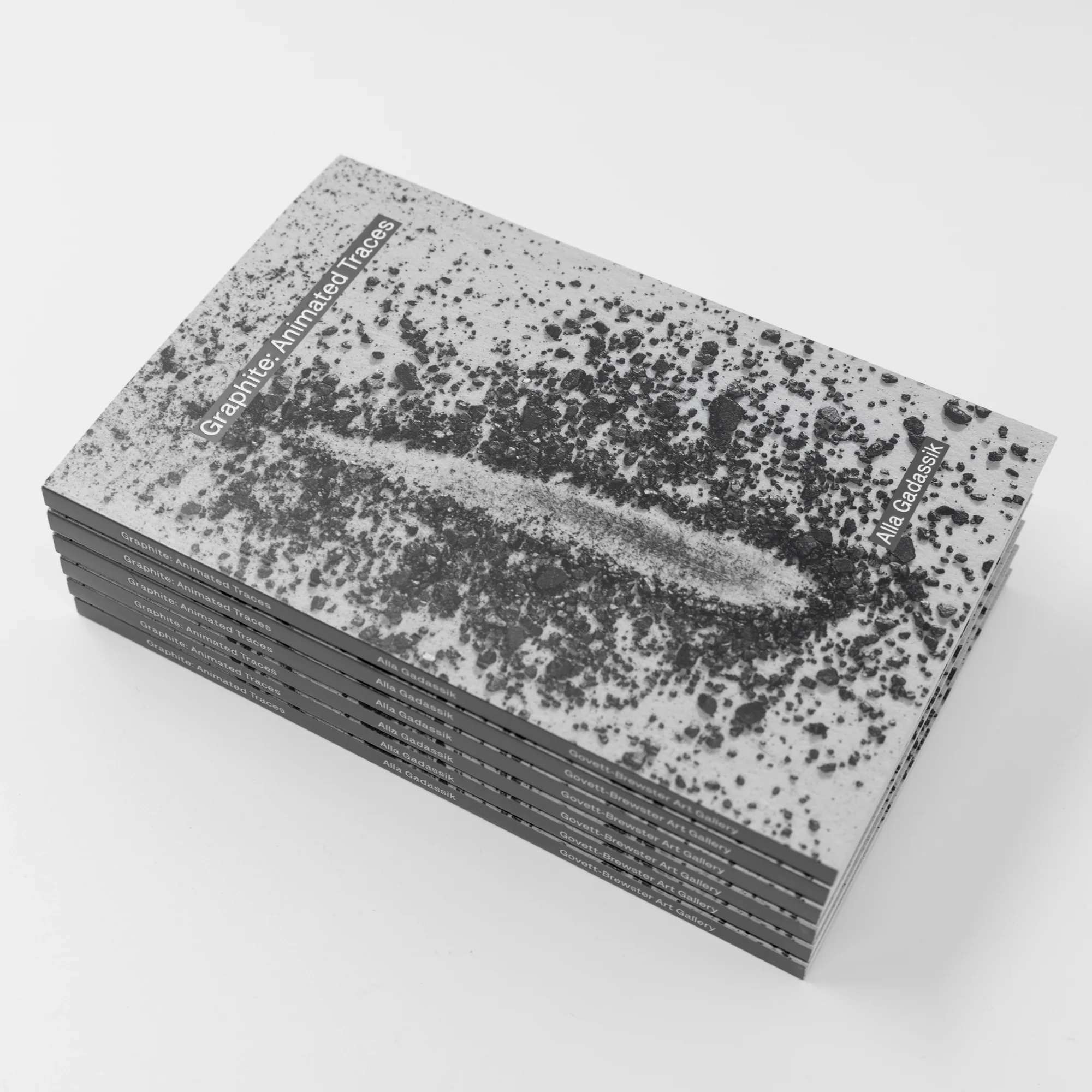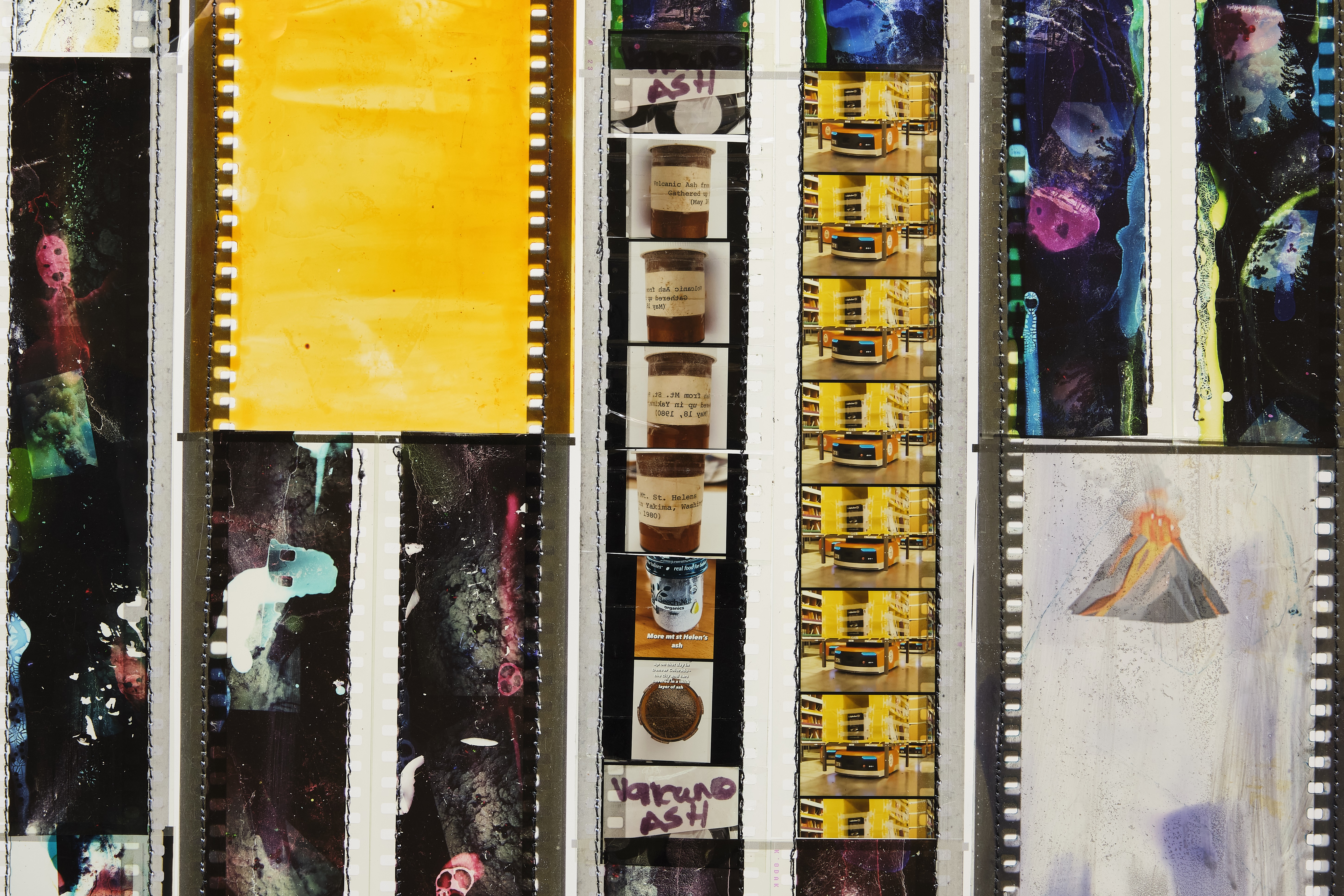Notes on the film
In this animated charcoal adaptation of Oscar Wilde’s story “Happy Prince”, Orikasa deconstructs the barriers between acts of reading, listening, and viewing. The film is guided by a voiceover narration of Wilde’s story, which recounts the tale of a prince who becomes a gem-covered statue tortured by the suffering of others. Animated handwriting appears in synchrony with the narration, as words and letters are graphically redrawn to enact a performance of the story. Handwriting takes on its own life, changing orientation and position to relate to meaning – dripping down, dancing across the page, and flying away. Using charcoal, the animator erases and redraws on top of the same paper canvases, leaving traces of the past throughout the work and building a work of text that relies on its form.
charcoal words are layered on top of each other to build scenes
Orikasa utilizes charcoal’s tonal variation under pressure and its openness to erasure, choosing different values in response to the narrative. When the titular prince is blinded, the scene is accompanied by shadowlike words, as a gentle application of charcoal renders it almost invisible. As a sparrow recounts its memories to the prince, the words begin to transform into discernible scenes, reflective of the prince’s developing capacity for mental imagination. A later dialogue between two characters is graphically differentiated by darkening the charcoal strokes, building voices that amass and act in sync. Charcoal creates a material relationship between the physical pressure of the artist’s hand and the animation, imposing a sense of embodied interpretation and responsiveness to tonal differences. The film is able to compose an emotive and layered narrative within a limited chromatic palette and alphabet lexicon.
The animator’s calligraphic approach to handwriting responds to the different qualities of oral, written, and visual language. As charcoal characters accumulate and are erased, shadows of words remain, creating a sense that the page has been turned, leaving just a hint of the past peeping through. Yet, unlike a storybook, the audio reading allows certain words to be accentuated or softened for effect. This is complemented visually through changes of scale and activation of the space surrounding words – for example, positioning letters tightly around a word to capture the tenseness of speech. In the tradition of calligraphy, Orikasa recruits the letters of the English alphabet to act as iconographic building blocks for characters and scenes. The word “sparrow” is simultaneously a combination of letters and a living, moving creature that takes off from the page in concert with a reader’s vivid imagination.
letters become characters connected to the narrative they tell
Interview with Ryo Orikasa
For more information on Orikasa’s process and alternative material use.
CartoonBrew – Interview with Ryo Orikasa
